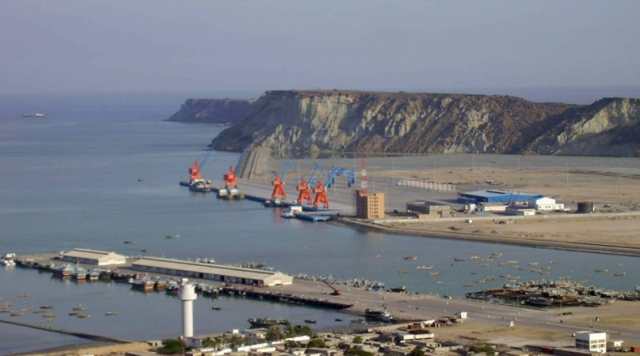International transit cargo starts to China from Gwadar
3 min read
Seafood will be transported to China from Gwadar port in freezer-containers that will open new era of prosperity and growth for Balochistan and the country
ISLAMABAD: A ship loaded with 200 tons of seafood anchored at Gwadar Port on Friday morning and would be transported to China through China-Pakistan Economic Corridor (CPEC).
The decision has been taken by the Federal Board of Revenue (FBr) under the directions of Prime Minister of Pakistan to kick off operations at the Gwadar Port.
Pakistan Customs has committed to realize the vision of Prime Minister Imran Khan for transforming Gwadar into an International Transit Trade Hub and facilitate trade through Gwadar Port.
FBR has already notified International Transshipment Rules to vide SRO 218(I)/2020 dated 10.03.2020. A Directorate of Transit Trade has also been established at Gwadar to work closely with the stakeholders and transform Gwadar into a Transit trade hub.
As a result of this proactive approach and support of all stakeholders, in the coming days, the port will handle more vessels containing international cargo including LPG, Steel Pipes, DAP fertilizer for transit to Afghanistan.
This reflects the confidence of the international business community and shipping lines in the Port’s economic potential and excellent trade facilitation measures put in place by Pakistan Customs.
Gwadar is the future of Pakistan and will help the country earn much needed foreign exchange in the future. During the recent visit of a high-level Pakistani delegation to Afghanistan led by Advisor on Commerce, the Afghan businessmen have shown interest in investing in trade through Gwadar Port.
Meanwhile, Pakistan has considerably improved its implementation of the World Trade Organization (WTO)’s Trade Facilitation Agreement (TFA) from 34% in June 2018 to 79% in November 2020.
According to a statement of FBR, Pakistan also improved 31 positions in the Trading Across Border Index, which tangibly contributed to the rising of Pakistan (from 136th position to 108th position) in the Global Fund’s Annual Ease of Doing Business 2020 Report.
Implementation of WTO’s TFA is greater than regional countries like India and Bangladesh, whose implementation rate is 78.2% and 36.1%, respectively. Pakistan’s implementation rate is higher than those of the average of all WTO members (which is at 65.5%) and the average of all developing countries (which is at 65.2%).
Trade facilitation is an effective driver for stimulating economic activity, attracting foreign direct investment, promoting exports, and generating employment.
Salient TFA reforms/provisions the government has implemented are Economic Operators (AEO) Program, Advance Ruling, Electronic payments, Pre-Arrival Processing. They further included Freedom of Transit, Opportunity to Comment and Information before Entry into Force, Temporary Admission of Goods and Inward and Outward Processing, Risk Management and Post Clearance Audit.
According to the WTO, the most difficult-to-implement (and least notified) provisions are Single Window and Border Agency cooperation.
Despite it, the government has done significant work on these important areas with the World Bank and the Asian Development Bank’s help to implement in Pakistan within timelines.
According to the World Bank, Pakistan has made the top 10 list of governments that have done the most in the past year to improve their countries’ ease of doing business. OECD Trade Facilitation Indicators Data Base (2019) has acknowledged Pakistan’s best performance across the areas under TFA.
Moreover, The World Customs Organization (WCO) has stated that “considering the recent advancement of Pakistan Customs administration for proceeding TFA, Pakistan Customs administration is very suitable to list in the successful countries.

